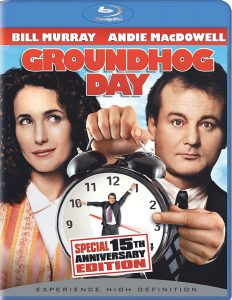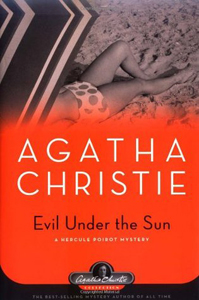In “Evil Under the Sun” (1941), Hercule Poirot takes a vacation to Smugglers’ Island, off the Southwest coast of England. Wouldn’t you know it, a murder happens while he’s there. And I get the sneaking suspicion he doesn’t mind too much.
A load of suspects, motives, alibis
There’s little to complain about regarding this mystery. Agatha Christie gives us a ton of suspects – helpfully listed at the book’s front – and big personalities and motives and interlocking alibis.
Some alibis are suspicious because of the secret love matches going on. About the only person not involved in the hotel’s love polygon is Poirot himself. But love (along with evil) must be in the air, because even Poirot is somewhat taken by self-made fashion designer Rosamund Darnley.

“Evil Under the Sun” (1941)
Author: Agatha Christie
Genre: Mystery
Series: Hercule Poirot No. 23
Setting: Devon, England, 1941
My only complaint is the lack of a map of the island. The author describes locations and distances fairly well, but I would’ve loved to have a map for reference.
Christie tries for a couple thoughtful themes here but only goes skin deep. For one, Poirot observes that bodies lying on the beach are not much different from slabs of meat. They aren’t people while they are just lying there.
(This was especially true in the days before sunblock, when people used suntan oil to make themselves more brown. Sort of like putting butter in a pan. Fortunately, we’ve learned since then.)
A sense of evil, they say
More notably, Poirot — who also had his vacation interrupted by mysteries in “Peril at End House” and “Triangle at Rhodes” — and the Rev. Lane agree that there’s a sense of evil in the air, despite the serene August vacation setting.
The author doesn’t do a lot to sell the notion beyond Poirot and Lane repeating the idea, and the teenage Linda Marshall dabbling in witchcraft. I’m looking forward to watching screen adaptations of this novel to see if they achieve the foreboding that Christie aims for but doesn’t quite achieve.
Lane’s notion is that Linda’s stepmom, Arlena Stuart Marshall – a former actress who can effortlessly keep men under her thumb (and who therefore is hated by women) – is the personification of evil.
For most of “Evil Under the Sun,” the vacationers do not have nice things to say about Arlena, a “gold digger” who is all outer appeal with no brains.
Poirot holds back on whether Arlena is the source of evil. Indeed, he has a fresh take on the subject at the book’s end, which I wasn’t too surprised by. Christie lays it on thick with how everyone – except the smitten Patrick Redfern – loathes Arlena. So I expected another perspective to finally come.

A clever, complex resolution
I was surprised by the resolution of the mystery, though. “Evil Under the Sun” is absolutely loaded with clues and suspects and theories.
Among them is that the secret heroin trade factors in. While I didn’t expect the answer to come from outside the folks listed at the novel’s front, it’s interesting to note how the U.K.’s war on drugs is a thing by 1941.
The answer to “whodunit” tricked me, yet Christie plays fair, and I bet some readers solved it. But even after that, there are so many dangling threads that we need 17 pages of explanatory material (which I appreciated) after the revelation of the killer.
If “Evil Under the Sun” achieved the foreboding mood it references with the Reverend’s blunt words, and if the characters had more dimensions, it could’ve been an elite novel. As it stands, it’s a notch short of that. Still, you could do worse than Poirot for a vacation mate.
Every week, Sleuthing Sunday reviews an Agatha Christie book or adaptation. Click here to visit our Agatha Christie Zone.

